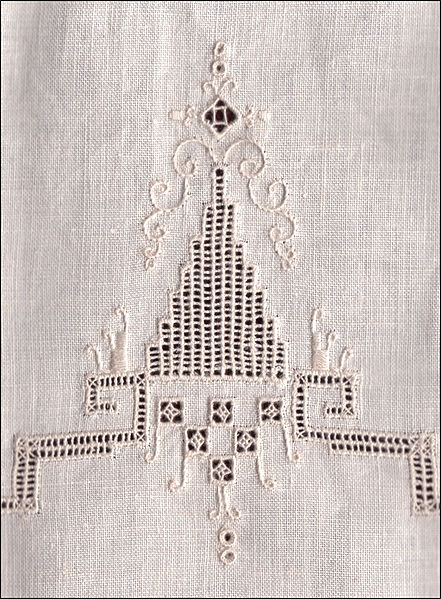Drawn thread work is one of the earliest forms of open work embroidery, and has been worked throughout Europe. Originally it was often used for ecclesiastical items and to ornament shrouds. It is a form of counted-thread embroidery based on removing threads from the warp and/or the weft of a piece of even-weave fabric.
The remaining threads are grouped or bundled together into a variety of patterns. The more elaborate styles of drawn thread work use a variety of other stitches and techniques, but the drawn thread parts are their most distinctive element. It is also grouped with whitework embroidery because it was traditionally done in white thread on white fabric and is often combined with other whitework techniques.
Linen towel with drawn thread work accented with embroidery in stem and satin stitch
Linen handkerchief decorated with three rows of hemstitching.
Making Mexican drawn work, early 20th century
Whitework embroidery is any embroidery technique in which the stitch and the foundation fabric are of same color. Styles of whitework embroidery include most drawn thread work, broderie anglaise, Hardanger embroidery, Hedebo embroidery, Mountmellick embroidery, reticella and Schwalm. Whitework embroidery is one of the techniques employed in heirloom sewing for blouses, christening gowns, baby bonnets, and other small articles.
Linen towel with drawn threadwork accented with embroidery in stem and satin stitch.
Dresden work on white linen; Engageantes
Richelieu cutwork embroidery, a form of whitework
Women's collar, Linen plain weave, drawn threadwork, cotton embroidery. Europe or North America, c. early 19th century. Los Angeles County Museum of Art: 60.41.82.






